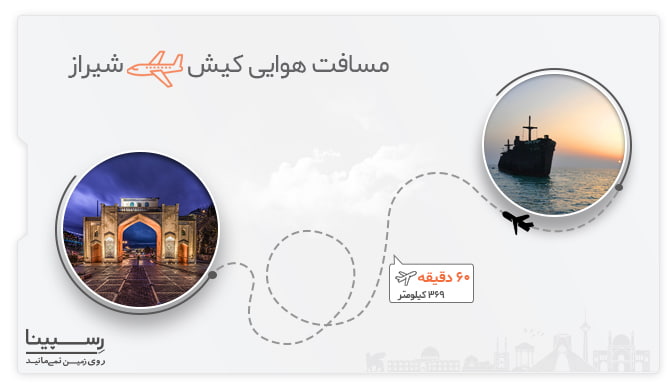Content Production Guide – Be Sure to Follow These Rules When Creating an Article
In today’s rapidly evolving digital landscape, creating high-quality content requires not only creativity and research but also a deep understanding of best practices in structuring and formatting articles. Authors must be aware of the guidelines that help ensure clarity and user engagement, and therefore it is essential to adhere to rules that prevent repetitive wording and avoid misuse of competitor names. By following a structured approach, writers can produce articles that are both informative and appealing, which in turn drives better user experience and improved rankings in search results. This comprehensive guide discusses the importance of an organized article structure from the title down to the conclusion, explains the advantages of integrating useful technical tips, and highlights the significance of incorporating key internal links that enrich reader experience. In this context, every section of the article—from the catchy and relevant H1 title to logically segmented subtitles, a concise introduction, and a detailed body with practical examples—plays a pivotal role in crafting a cohesive narrative that addresses the reader’s needs.
The process begins with crafting an engaging title. The title should be eye-catching and incorporate the main keyword to instantly communicate the focus of the article. Once the title is set, the body text must be logically segmented using appropriate subtitles (such as H2 and H3 tags) to ensure that the content remains organized and that each section focuses on specific subtopics. The introduction sets the tone by providing context and explaining the importance of the topic to the target audience. A well-written introduction invites readers to explore further and establishes credibility at the very beginning of the article.
Moving on to the main body, it is crucial to include detailed explanations supported by practical examples and documented data. This part of the article should not only present facts but also demonstrate how theoretical concepts can be applied in real-life scenarios. Such a methodology enriches the content by engaging readers with a mixture of qualitative insights and quantitative evidence. Moreover, presenting key data and evidence builds trust and helps validate the claims made within the article, thereby ensuring that readers find the content both interesting and reliable. For instance, when discussing the importance of avoiding repetitive phrasing, it is essential to use varied sentence structures and synonyms to maintain a natural flow and prevent the text from appearing monotonous or over-optimized.
Another significant element in content creation is the integration of technical tips aimed at preventing content generation errors. The guidelines emphasize the importance of avoiding repeated sentences and ensuring that the article’s content remains coherent throughout. Successful application of these rules requires that each section of the article is interrelated, avoiding any abrupt transitions that could confuse the reader. Among the practical recommendations is the use of bullet points and lists where applicable, as these not only break up large blocks of text but also increase readability, which is an important factor for both the reader and search engines alike. In addition to quality writing, the use of natural expressions and varying sentence structures contribute to an overall tone that is engaging rather than robotic, ensuring that the reader remains absorbed in the content from beginning to end.
At the heart of effective content production is the application of fundamental SEO principles that extend beyond mere keyword stuffing. The method involves including the main keyword in the title and seamlessly integrating related phrases throughout the article. Such an approach serves two core purposes: it makes the content more accessible and relevant to users, and it avoids the pitfalls of overusing anything that might be flagged by search engines as spam. Essential to this balance is the careful integration of synonyms and conceptually linked words, which help diversify the language without compromising clarity. Importantly, the content must also avoid the use of overly long sentences or cumbersome paragraphs that might overwhelm the reader, ensuring that each sentence serves a clear purpose and that each paragraph transitions logically into the next.
Furthermore, technical accuracy is paramount to prevent any broken outputs or unnatural structures that may arise from automated content generation. Every piece of content must be reviewed to ensure that the outputs are error-free and provide valuable, non-thin content that meets the standards of both the intended audience and automated indexing systems. The final product should be plain text with proper paragraph formatting and the correct usage of HTML heading tags, devoid of unnecessary extra code that could interfere with WordPress integration. In this regard, adhering to a clear and modular structure—not only improves readability but also ensures that the article is compatible with diverse web publishing systems.
A key part of the overall strategy is to include internal hyperlinks in the exact format provided. These links help guide users to additional relevant resources on the same website, thereby enhancing navigation and enriching the reader’s exploration of related content. For instance, consider the following internal reference that must be inserted at appropriate intervals: kish shiraz ticket-Iran Charter. The inclusion of this specific hyperlink is designed to drive traffic to pertinent sections of the website, offering readers a direct pathway to further information. This technical integration not only improves usability but also reinforces the site’s internal linking structure, which can have a positive impact on overall search engine performance. It is important to note that this internal link should appear exactly three times in the article to maximize its effect without overwhelming the content.
Moreover, when developing content, it is critical to avoid any superfluous or sensitive elements. The guidelines state that forbidden content should be strictly avoided and that there must be no inclusion of terms that violate site policies or the trust of the audience. By focusing solely on the creation of valuable, insightful, and user-centric content, authors can ensure a high-quality output that speaks directly to the needs of its readership. In addition, maintaining a user-friendly tone and using clear, unambiguous language fosters a sense of reliability and professionalism that benefits the site’s overall credibility.
In practical terms, imagine a scenario where a writer is tasked with producing an article about content production. Starting with a thoughtful headline, the article would outline each stage of content creation—from ideation and research, through drafting and editing, to final publishing in a way that adheres to both SEO best practices and editorial standards. Each point made within the body of the article is underpinned by factual data and illustrated with real-world examples, ensuring that the information is not only persuasive but also actionable. Such an article not only educates the reader about the technical aspects of content production but also provides a roadmap that can be easily followed by those looking to enhance their online presence.
Throughout this extensive discussion, writers are encouraged to keep their sentences concise and their paragraphs well-structured, ensuring that the flow of information remains uninterrupted. The importance of having distinct sections for the introduction, main body, and conclusion cannot be overstated, as each plays a unique role in conveying the overall message. Additionally, establishing a logical progression of ideas helps maintain the reader’s interest over extended pieces of content that may span several thousand words. The strategic placement of internal links, such as kish shiraz ticket-Iran Charter, not only anchors key pieces of information but also provides readers with valuable resources to further their understanding of the subject matter.
As the article reaches its concluding portions, it is equally important to provide a summary that encapsulates the main points and offers actionable suggestions for further study or practical implementation. The conclusion ties together the various themes discussed throughout the piece, from technical production guidelines to overarching SEO strategies, and reiterates the importance of a well-organized approach to content creation. It emphasizes the dual focus on both quality and technical accuracy, urging writers to engage in thorough proofreading and regular updates to ensure that the content remains relevant over time. In the final analysis, a successful article is one that marries creativity with disciplined adherence to best practices, resulting in a polished piece that not only informs but also inspires.
In the broader realm of online content, the pursuit of excellence is a continuous journey. Writers must remain abreast of new methodologies and updates to search engine algorithms while never compromising on the quality of information provided. As the digital sphere becomes more competitive, investing time and effort in crafting detailed, well-structured articles becomes an indispensable part of any effective marketing strategy. Each element—from a compelling title to an insightful conclusion—is a critical component that contributes to the overall impact of the content. The art of balancing keyword inclusion, internal linking, and natural language ensures that the final publication serves as both an effective communication tool and a valuable resource for its intended audience.
Moreover, understanding the nuances of on-page optimization techniques has become more important than ever. Writers who are well-versed in the principles of modern digital content production recognize that integration of technical aspects should not overshadow the importance of readability and user engagement. In practice, this translates to an article where every sentence is crafted with precision and care, offering readers both guidance and an enjoyable reading experience. It involves a delicate balancing act of showcasing technical expertise while ensuring that the language remains accessible and free from unnecessary repetition. The avoidance of consecutive keyword repetition, for instance, is a small but significant detail that can enhance the overall quality of the article and prevent it from being flagged as over-optimized.
As the discussion continues, it is imperative to reiterate that the quality of content is measured not merely by its length but by its ability to convey valuable insights in a coherent and engaging manner. Long-form articles, when executed correctly, can be an asset that offers exhaustive coverage of a topic, leaving no stone unturned. They provide ample opportunity for writers to delve into both the theoretical and practical aspects of content production, thereby equipping readers with the knowledge needed to implement effective strategies in their own work. The journey from ideation to final publication is characterized by numerous checkpoints—each serving as an opportunity to refine ideas and ensure that the end product meets the highest standards of excellence.
Furthermore, the consistent application of guidelines, such as those mentioned in this article, contributes to building a robust framework for content creation that is both scalable and sustainable over time. This framework not only helps in achieving better organic rankings but also positions the content as a trusted resource in the eyes of the audience. Every writer who aspires to create influential online material must therefore commit to a disciplined process, one that involves rigorous planning, systematic execution, and continuous refinement based on feedback and evolving best practices. The thorough integration of internal links, such as kish shiraz ticket-Iran Charter, exemplifies a strategic move that reinforces the importance of maintaining connectivity within the website, thereby boosting both user engagement and overall site performance.
In summary, the creation of content that is both comprehensive and SEO-friendly requires careful consideration of multiple factors—from targeting the right keywords without over-optimizing to ensuring that each section contributes to the overall narrative. The guidelines presented in this article serve as an extensive roadmap for writers who wish to produce high-quality articles that are meticulously structured and rich in valuable information. By embracing these principles, content creators can not only meet but exceed the expectations of modern digital audiences. As the digital environment becomes increasingly sophisticated, the ability to blend creativity with technical precision will ultimately define the success of any online publication. The journey is ongoing and demands commitment, but the rewards—in the form of enhanced readability, improved search rankings, and greater audience trust—are well worth the effort.

Understanding Dynamic Ticket Pricing
Competitor articles emphasize that ticket prices are influenced by multiple factors such as booking dates, travel seasons, and the number of passengers, while offering detailed insights into the fluctuating nature of fares. This approach helps readers grasp how market forces affect the overall cost structure and guides them in planning their travel expenses effectively.
Evaluating Baggage Allowance Guidelines
In-depth competitor content explains that understanding baggage allowances is crucial for avoiding unexpected fees. It elaborates on how limitations differ based on ticket class and airline policies, ensuring that travelers are well-prepared to manage their luggage according to established rules.
Calculating Excess Baggage Charges Efficiently
Competitor articles illustrate that excess baggage fees are calculated on a per-unit basis, frequently expressed as a percentage of the fare. Readers learn the importance of arranging luggage in advance to prevent extra costs. For additional insights, check out kish shiraz ticket-Iran Charter in our dedicated resource section.
Refund Policies and Cancellation Fees Explained
Clear explanations regarding refund policies and cancellation fees feature prominently in leading competitor texts. These articles detail how cancellation conditions vary with booking time and special circumstances, empowering travelers to make informed decisions before finalizing their reservations.
Strategies for Purchasing Affordable Tickets
Effective strategies for securing affordable tickets are a common theme in competitor content. Topics such as booking during low-demand periods, utilizing real-time fare comparisons, and planning ahead are discussed to help travelers snag the best available prices without compromising on convenience.
Benefits of Charter Ticket Options for Budget Travelers
Many competitor articles highlight the advantages of charter ticket options, noting that they offer competitive fares along with distinctive service elements. This information can provide a guide for budget-conscious shoppers seeking both cost savings and satisfactory travel experiences. Learn more at kish shiraz ticket-Iran Charter for further details.
Using Price Calendars to Optimize Purchase Timing
Detailed competitor insights recommend leveraging price calendars to track fare variations over time. By analyzing historical data and identifying cost-effective purchase windows, travelers can optimize their buying strategy and secure tickets at the most attractive rates available.
Customer Reviews and Flight Experiences as Indicators
In competitor literature, real customer reviews and flight experiences are integrated to provide a balanced perspective on travel services. These firsthand accounts enrich the content by offering practical insights and helpful tips that assist readers in selecting the best options for their journey.
Importance of Meticulous Trip Planning for Hassle-Free Travel
Drawing on extensive competitor content, this section emphasizes the value of thorough trip planning. From understanding refund policies and baggage limits to choosing the ideal travel period, careful preparation is key to ensuring a smooth and cost-effective travel experience. For further reading, explore kish shiraz ticket-Iran Charter to enhance your planning strategies.

FAQs
- What factors determine the price for a flight from Kish to Shiraz?
- The ticket price is influenced by the booking time, ticket type (roundtrip or one-way), and any available discounts.
- What is the baggage allowance for flights from Kish to Shiraz?
- Generally, economy tickets allow between 15 to 25 kilograms of baggage, although this may vary by airline.
- What is the extra baggage fee for flights from Kish to Shiraz?
- Extra baggage fees are typically charged per kilogram, often around 1% of the ticket price. The exact rate depends on the airline’s policy.
- What is the cancellation fee for a flight ticket from Kish to Shiraz?
- Cancellation fees vary based on the ticket’s refund policy. It is important to review the cancellation terms at the time of booking.
- How can I book a flight ticket at a low price?
- Booking during off-peak periods, using price calendars, and choosing non-holiday dates can help secure lower ticket prices.
- Is it possible to purchase charter tickets through Iran Charter?
- Yes, you can search for and purchase available charter flights directly on the Iran Charter website.
- How can I check daily flight prices from Kish to Shiraz?
- Visit irancharter.ir and use the flight search feature to view and compare the most up-to-date ticket prices.
- What factors affect the ticket prices?
- The price can be influenced by the timing of your booking, the number of passengers, the type of ticket, special discounts, and travel conditions.
- How do I purchase an airline ticket online?
- Simply log in or register on the Iran Charter website, search for your desired flight from Kish to Shiraz, and follow the online booking process.
- Is there an age restriction for booking a flight ticket?
- There is no strict age requirement for booking tickets; however, special provisions may apply for infants and children.
- Can I change my flight date?
- If your ticket allows changes according to the airline’s policy, you can modify your flight date to suit your schedule.
- How do I benefit from special discounts?
- Stay informed about our exclusive offers by regularly checking the Iran Charter website and subscribing to our newsletter.
- What are the Iran Charter customer support contact details?
- For assistance, please call 021-43900000 or use the contact form available on the Iran Charter website.
- Is it possible to book a roundtrip ticket?
- Roundtrip tickets are available with attractive discounts and can be easily booked through the Iran Charter online platform.
- What are the ticket refund conditions?
- Refund conditions are clearly outlined on the Iran Charter website under our terms and policies. They vary based on the type of ticket purchased.
- What are the advantages of booking a flight online through Iran Charter?
- Online booking with Iran Charter is fast, secure, and allows you to compare prices along with accessing exclusive discounts.
- How can I be sure I am getting the best deal?
- By comparing prices, reading user reviews, and taking advantage of verified promotions on irancharter.ir, you can confidently secure the best available deal.














